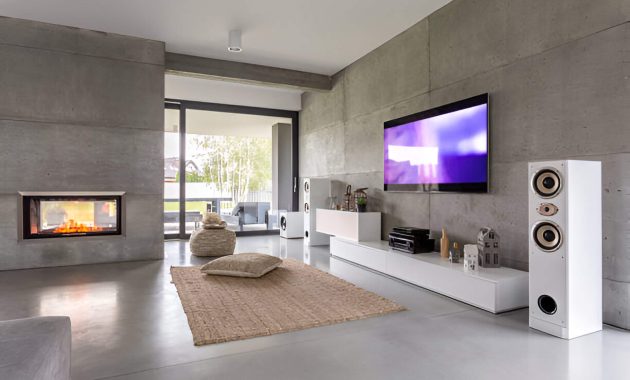Utilizing your TV as a computer monitor can significantly improve your viewing experience, providing a better view for work or entertainment. Here’s a guide on how to use a TV as a monitor:
Step 1. Check Your TV’s Compatibility
Before diving into the world of gaming consoles, it’s crucial to assess your TV’s compatibility. Start by examining the available HDMI ports on your television. Modern gaming consoles require HDMI connections, so ensure you have at least one free port.
Next, consider the input lag of your TV. This refers to the delay between your controller input and the action appearing on screen. For optimal gaming performance, look for a TV with low input lag, ideally under 20 milliseconds.
Refresh rate is another important factor. A higher refresh rate, such as 120Hz, can provide smoother gameplay for compatible games. However, a standard 60Hz refresh rate is sufficient for most gaming experiences.
Resolution is key for visual quality. While 4K resolution offers stunning graphics, 1080p is still widely supported and provides a good gaming experience. Check your TV’s maximum resolution and compare it with your desired console’s output capabilities.
Lastly, consider any smart TV features that might enhance your gaming setup. Some TVs offer game modes that optimize settings for reduced lag and improved picture quality, while others may have built-in streaming capabilities for accessing gaming content.
By carefully evaluating these aspects of your TV, you’ll be better equipped to choose a gaming console that aligns with your television’s capabilities and your gaming preferences.
Step 2. Gather the Necessary Equipment
Before you begin the process of connecting your laptop to your TV, it’s crucial to gather all the necessary equipment. The most common method involves using an HDMI cable, which transmits both high-quality video and audio signals. Ensure you have an HDMI cable long enough to reach from your laptop to your TV comfortably.
If your laptop doesn’t have an HDMI port, you may need an adapter. For instance, newer MacBooks often require a USB-C to HDMI adapter, while some older laptops might need a VGA to HDMI converter. Check your laptop’s ports and purchase the appropriate adapter if needed.
Alternatively, you might consider wireless display technology such as Chromecast, Apple TV, or Miracast. These devices allow you to connect your laptop to your TV without cables, offering a cleaner setup and more flexibility in positioning your devices.
For those prioritizing audio quality, you may want to explore additional audio solutions. While HDMI carries audio, you might prefer to use external speakers or a soundbar for a more immersive experience. In this case, ensure you have the appropriate audio cables or wireless audio setup ready.
By gathering all the necessary equipment beforehand, you’ll streamline the connection process and avoid frustrating interruptions once you begin.
Step 3. Connect Your Computer to the TV
Once you’ve prepared your computer and TV, it’s time to establish the connection. The most common method is using an HDMI cable, which provides both high-quality video and audio transmission. Simply plug one end of the HDMI cable into your computer’s HDMI port and the other end into an available HDMI port on your TV.
For those preferring a wireless setup, many modern TVs support wireless display technology. Enable the wireless display feature on your TV and computer, then follow the on-screen instructions to pair the devices. This method eliminates the need for cables but may occasionally experience slight lag or quality issues compared to a wired connection.
When using multiple cables, proper cable management is crucial for a neat and organized setup. Use cable ties or sleeves to bundle cords together and keep them out of sight. This not only improves the aesthetics of your entertainment area but also reduces the risk of accidental disconnections.
After connecting, don’t forget to select the correct input on your TV. Use your TV remote to cycle through input options until you see your computer’s display. Some TVs automatically switch to the active input, but you may need to manually select it in some cases.
By following these steps, you’ll have your computer successfully connected to your TV, ready for an enhanced viewing experience.
Step 4. Adjust Display Settings on Your Computer
Once you’ve connected your monitor, it’s time to fine-tune your display settings for optimal viewing. Start by adjusting the resolution settings to match your monitor’s native resolution, ensuring crisp and clear visuals. Next, explore scaling options to find the perfect balance between readability and screen real estate. If you’re using a rotating monitor, experiment with display orientation settings to switch between landscape and portrait modes as needed.
For those with multiple displays, take advantage of your operating system’s multi-monitor features. Arrange your screens in a configuration that suits your workflow, and consider using different scaling settings on each display if they have varying sizes or resolutions. Don’t forget to customize your taskbar and desktop icon settings for a seamless multi-monitor experience.
Remember, these settings can significantly impact your productivity and comfort, so take the time to find the perfect combination for your needs. Regular adjustments may be necessary as your work habits evolve or lighting conditions change in your environment.
Step 5. Optimize TV Settings for Computer Use
To ensure the best experience when using your TV as a computer monitor, it’s crucial to optimize your TV settings. Many modern TVs offer specific modes designed for computer use, such as “Game Mode” or “PC Mode.” These presets typically reduce input lag and adjust picture settings for optimal clarity.
Start by activating the appropriate mode in your TV’s settings menu. If your TV doesn’t have a dedicated PC or Game Mode, you’ll need to manually adjust the picture settings. Begin with sharpness, contrast, and brightness. Reduce sharpness to minimize artificial edge enhancement, and adjust contrast and brightness for clear, legible text.
Color calibration is another important aspect. Many TVs come with preset color temperatures; “Warm” or “Normal” settings often provide the most accurate colors for computer use. If available, use your TV’s built-in calibration tool or consider using online calibration resources for more precise adjustments.
Remember to disable any motion smoothing or image processing features, as these can introduce lag and distort the image. By fine-tuning these settings, you’ll create an optimal viewing experience for computer tasks on your TV screen.
Step 6. Set Up Audio

Setting up the audio for your TV is a crucial step in creating an immersive viewing experience. While built-in TV speakers can suffice, many users opt for external speakers or soundbars to enhance audio quality. Begin by connecting your chosen audio device to the TV, either through HDMI, optical cable, or Bluetooth, depending on your equipment’s capabilities.
For wired connections, ensure cables are securely plugged in and select the appropriate audio output in your TV’s settings. If you’re using Bluetooth, pair your device with the TV following the manufacturer’s instructions. Once connected, test the audio to confirm it’s working correctly.
Pay attention to any audio delay issues, which can occur when the sound doesn’t sync with the on-screen action. Most modern TVs have an audio delay adjustment feature in their settings menu. Experiment with this setting until the audio and video are perfectly synchronized.
Remember that room acoustics play a role in sound quality. Consider the placement of your speakers and adjust their positioning for optimal performance. With your audio properly set up, you’re ready to enjoy a more engaging and high-quality viewing experience.










